‘How did Napoleon die?’ Sorin asks on the passage from Cape Town to St Helena. ‘He only spent 5 years exiled on the island…’
‘I am not sure, but we will find out’ was my answer.
We didn’t have to wait for too long to figure it all out. Whilst rounding St Helena to reach the only safe anchorage on the island we realised that Napoleon must have died of a broken heart! What worse punishment is there, than being condemned to spend the rest of your life mid Atlantic on a most inhospitable rock, having left behind love, triumph and glory?!
St Helena is a magnificent, yet horrendously dark barren rock popping out mid ocean, so frighteningly striking in appearance, as if the molten rock broke through the Earth’s crust yesterday, not some 10 million years ago.
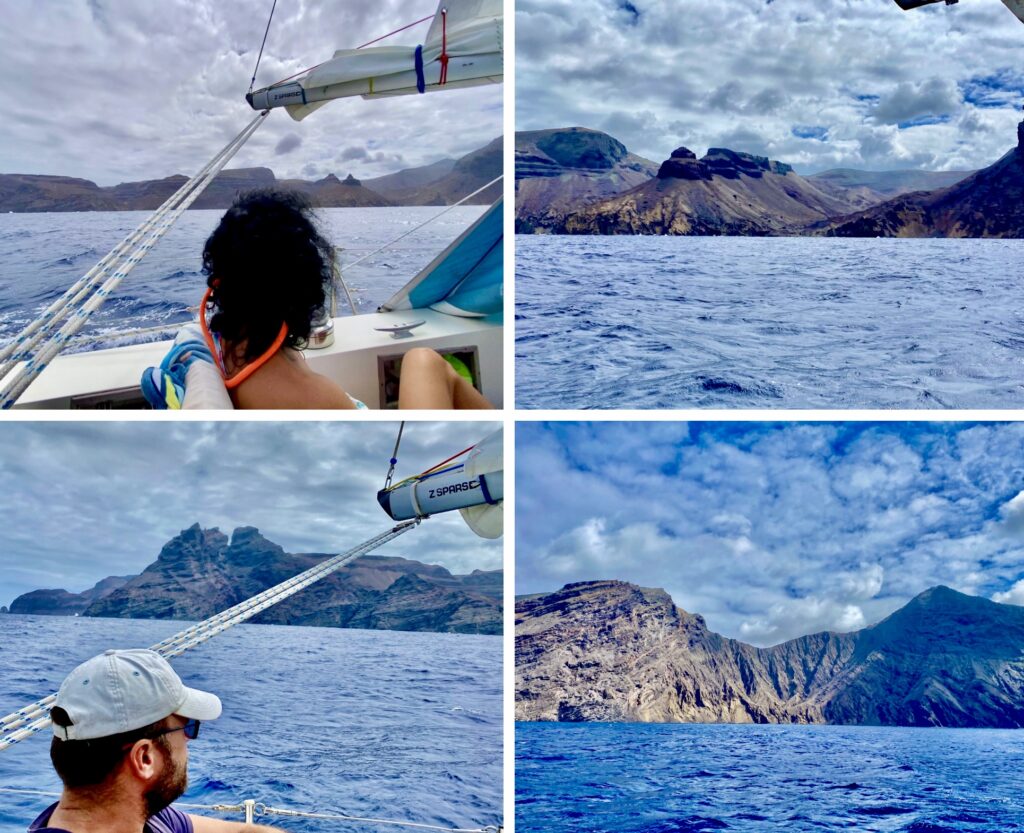
Being discovered on the Christian Santa Hellena’s Day in 1502 by Portuguese navigators returning from India on the trade winds route, today the island is a melting pot of ethnicities, totalling over 5000 inhabitants, referred to as ‘saints’.
Our stop over in St Helena was short and sweet. We made landfall on the Friday of St Valentine’s, to set sail again on Sunday afternoon.
It was not the first unfavourable impression of the island that put us off. In fact, Jamestown, the only settlement on the island, despite being trapped in time, turned out to be a really enjoyable experience.

It was the untenable anchoring in 20 metres of water mid ocean, coupled with our desire to make it to the Brazilian Carnival, that decided the length of our stay.
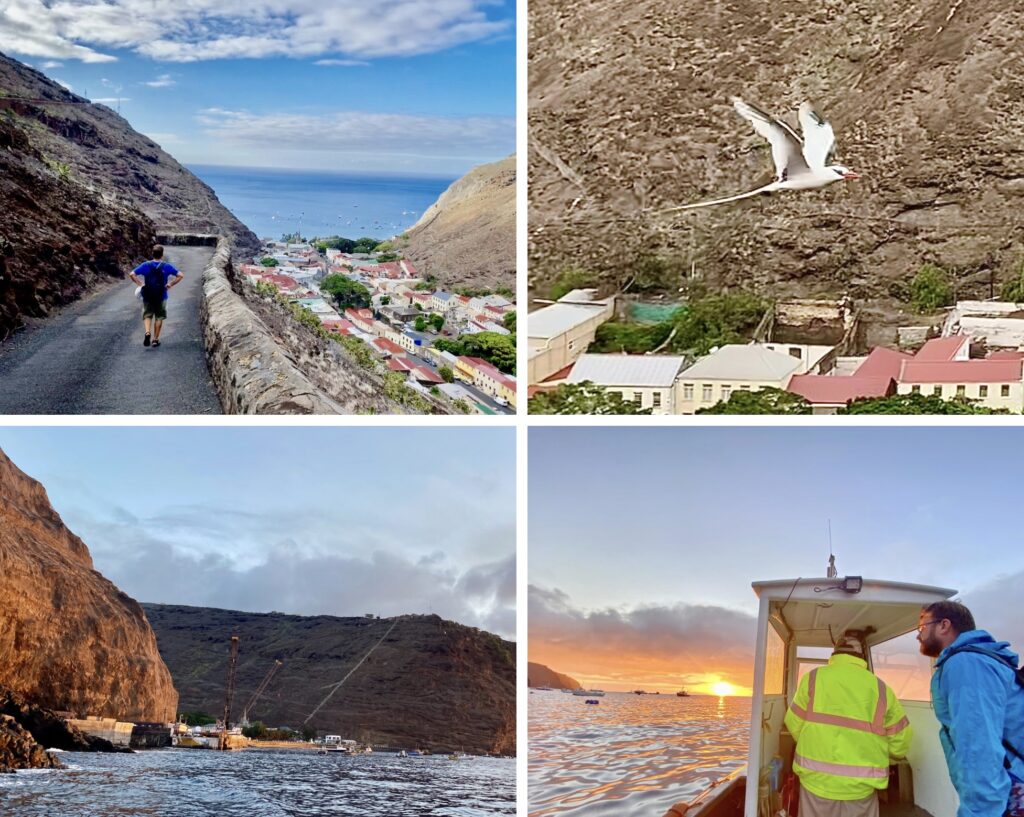
Boats, possibly including Mehalah, were dragging anchor on a conveyer belt. We woke up in the middle of the night to reset our anchor when ‘an ugly frog’ could not resist Princess Mehalah’s charms and resolved to steal her a kiss…whilst the owners remained fast asleep!
With these ‘promiscuous anchoring conditions’, we decided that we would be safer sailing the ocean rather than being anchored mid ocean.

Whilst on the passage from Africa the winds and seas were at times intense, we set off sailing from St Helena to Brazil, just under 1800 nautical miles, with light following winds on a settled sea.
The light winds would give way to a bit of lulling until another spell of light winds returned, usually brought about by a little showery squall. It felt like nature is pulsing, spreading the energy required to power our sails, just enough to move us along on a numb ocean, under an overcast sky.
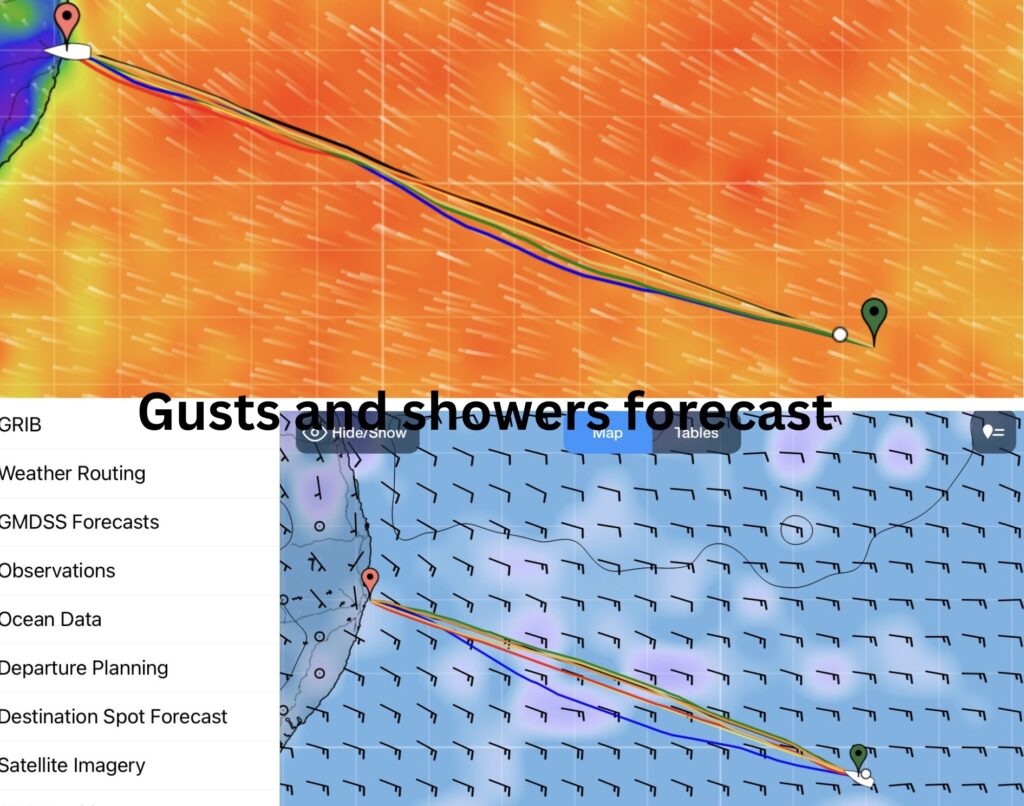
To start with the squalls were nowhere near as vicious as the ones we experienced crossing the North Atlantic. However, as we made more progress sailing north west, the sun chased away the tick cloud layer and the squalls picked up in intensity. So did the wind, becoming more constant and pushing Mehalah forward like a speed train cutting through a more active, yet benign Atlantic. We were finally in the fourth gear. Everything was in perfect balance.
We felt so happy to be reunited with this ‘old friend’! A friend that commands respect. An unpretentious friend without assertion for sophistication or hidden agenda. Just a night sky to die for! A blanket of blinding twinkles, randomly spread over the dark cloak of the night or cluttered in a galactic glow. The night sky clarity is uniquely astonishing on the Atlantic Ocean.
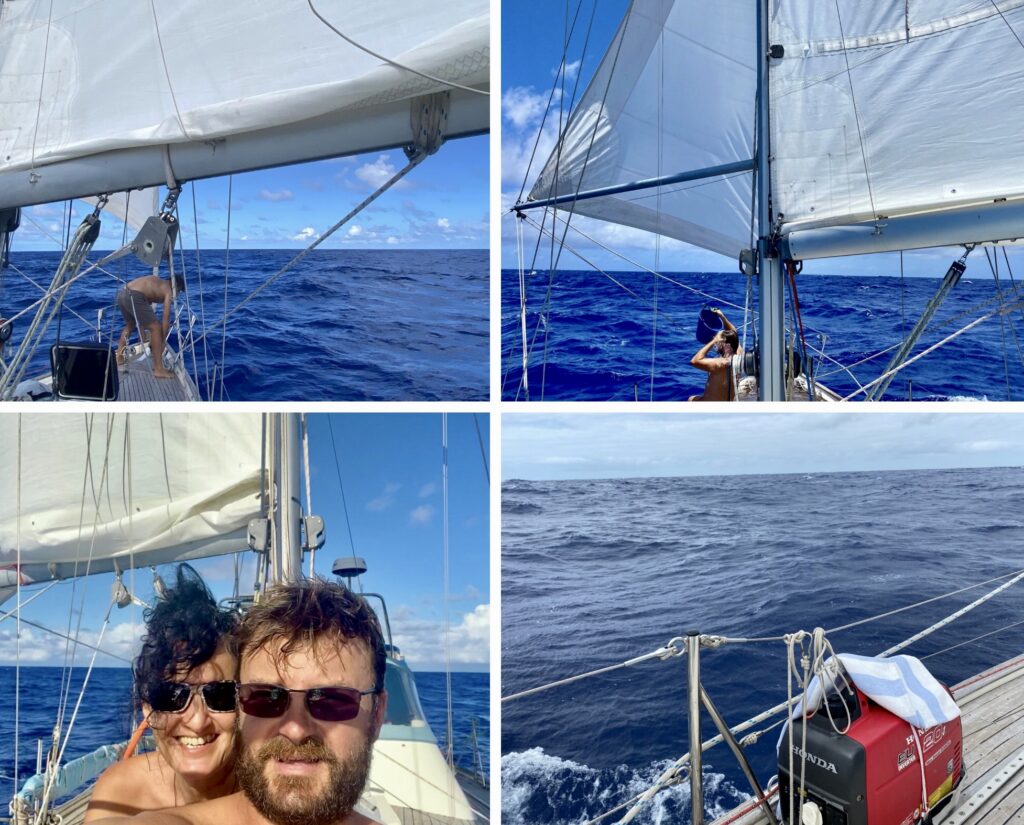
Whilst most days were perfectly balanced, most nights were tough. In the morning, we would set Mehalah for the day and she would just perform with no hick-ups. Comes the night, everything was thrown off balance.
Either the wind would die or the squalls would gather up, each and every one of them, messing up Mehalah’s natural rhythm. Wind shifting. Sails flapping. Rain falling. Coupled with the complication of Mehalah’s dying home batteries. These were failing to retain their charge overnight enough to feed our navigation instruments. The nights were a struggle.
We would be scrambling around the deck in dark putting the generator on, with an eye out for the rain, when the batteries charging operation would have to be aborted. Nights were not fun at all. But, as the Captain puts it, compared to recent ocean crossing past experience, this was just a minor inconvenience.
At the end of the first week the wind died away to nothing. We had no choice but to motor on and off just for a day or so, until the wind returned.
Squalls mostly disappeared. Nature resumed its more regular pulsations, making our diurnal sailing life easier again. However, as we were advancing north the thermometer was gradually scrambling up. We were becoming more and more sluggish, dizzy, uncontrollable.
Despite the overall settled offshore sailing routine, no day or night was the same. The most subtle changes in weather and/or sea state would translate in the most varied sailing conditions from perfection to extreme roll. The overall settled sea state would allow us to make the most of our limited stores in the galley.
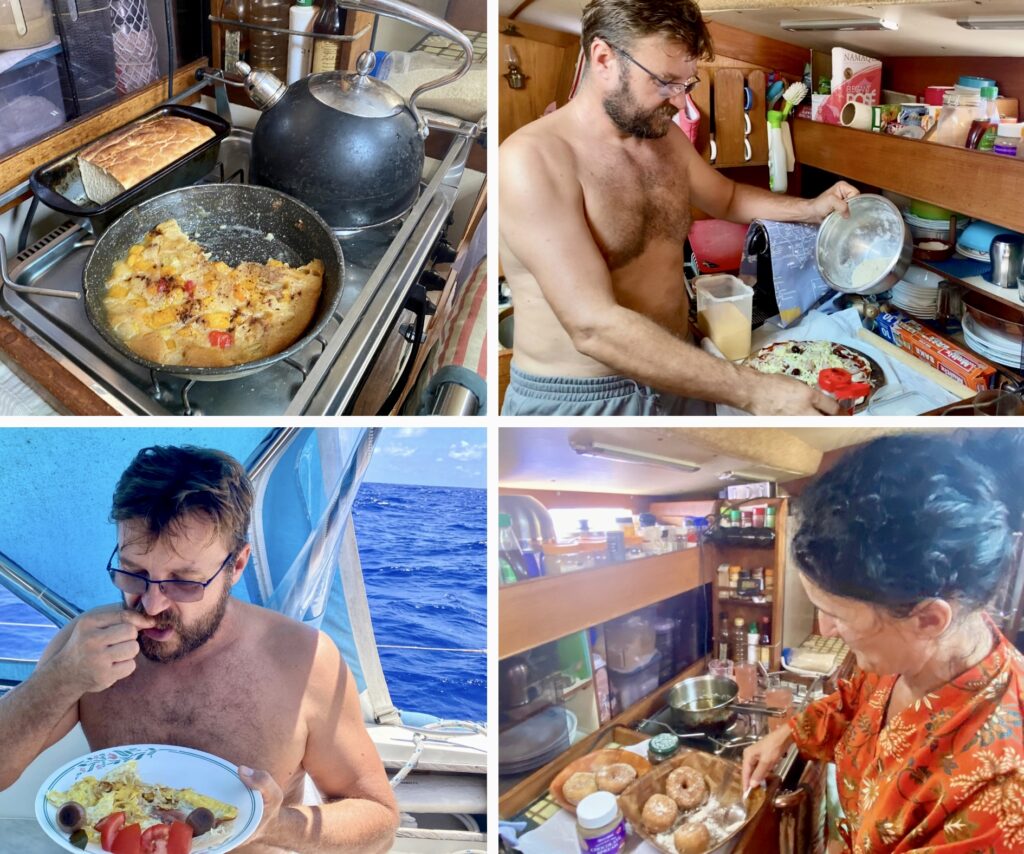
28 days sailing over 3500 nautical miles saw us crossing the South Atlantic Ocean from the southernmost point of the African continent to the easternmost point of the South American continent. Whilst dolphins saw us out of Cape Town, pilot whales were leading the way into Recife.
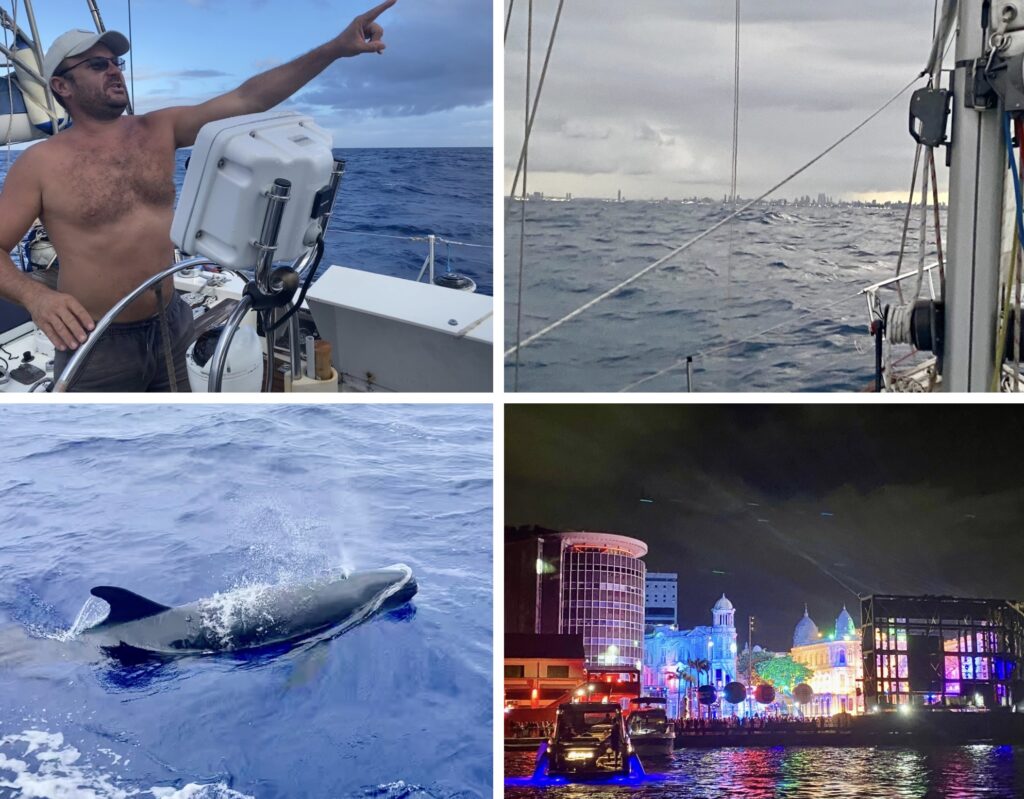
We made landfall with the incandescent Brazilian Carnival in full swing!

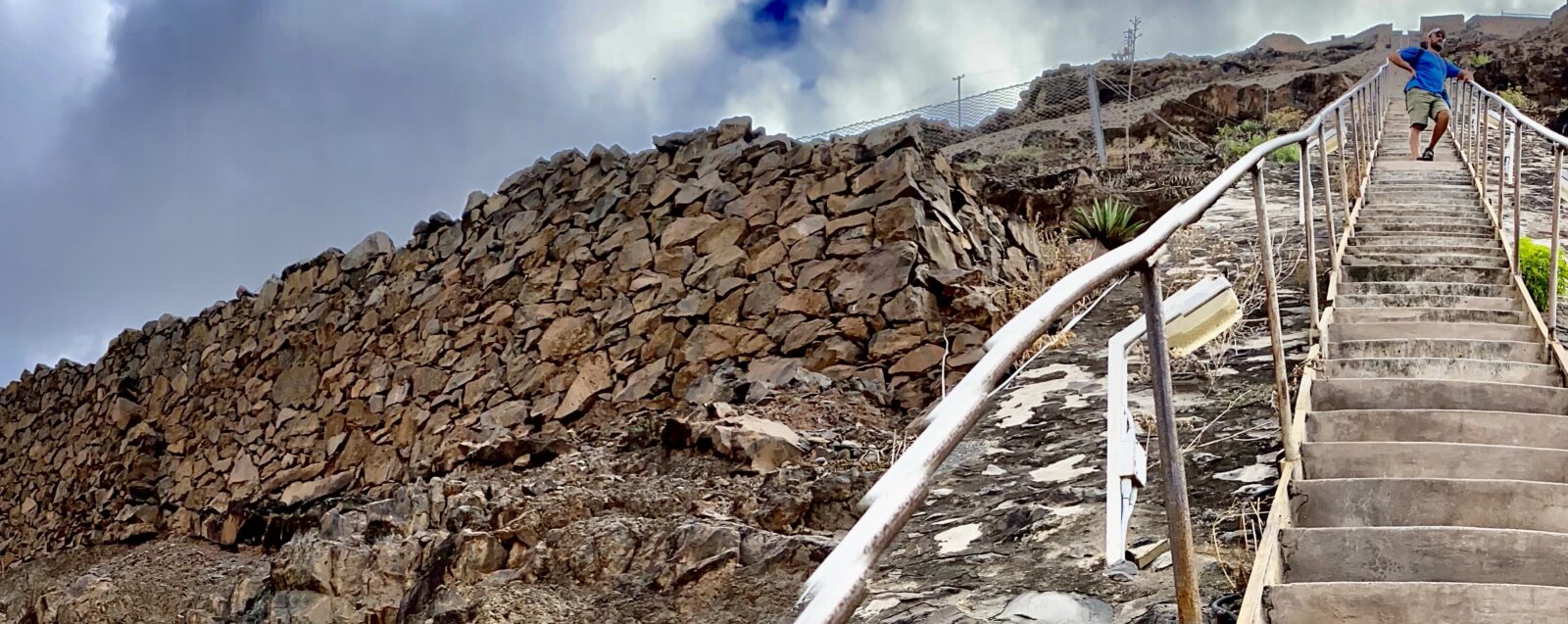
Great pics again thanks team!